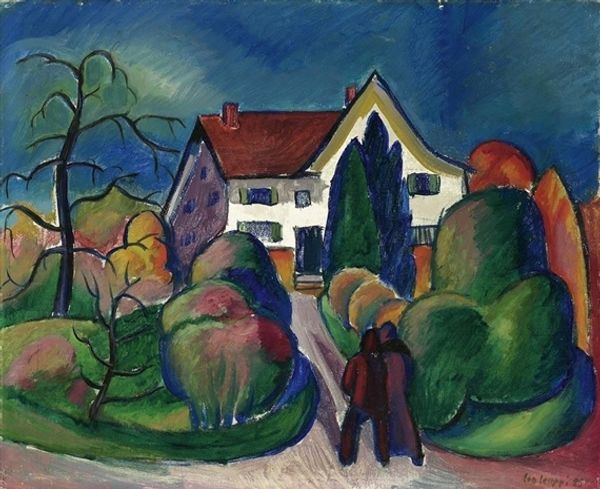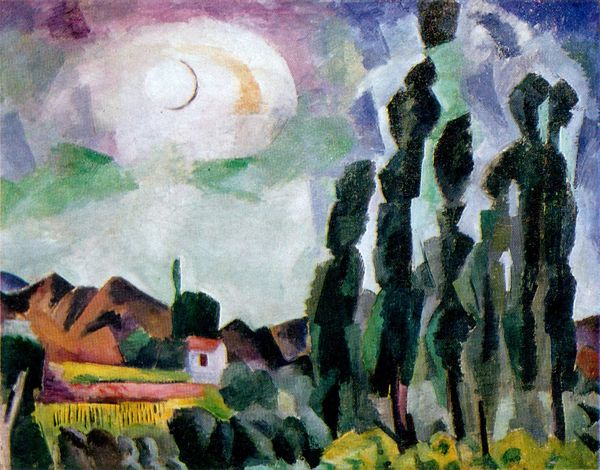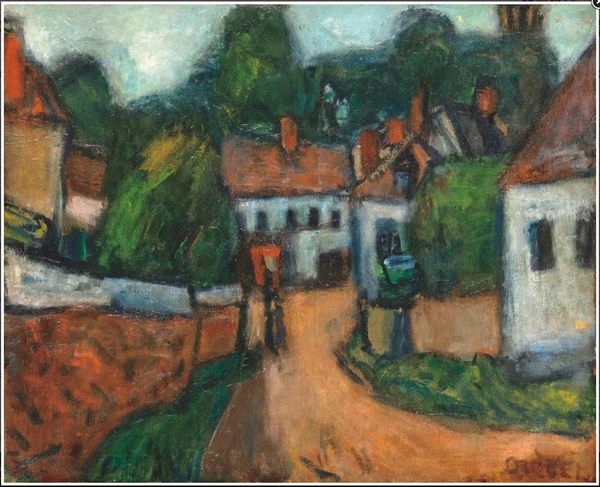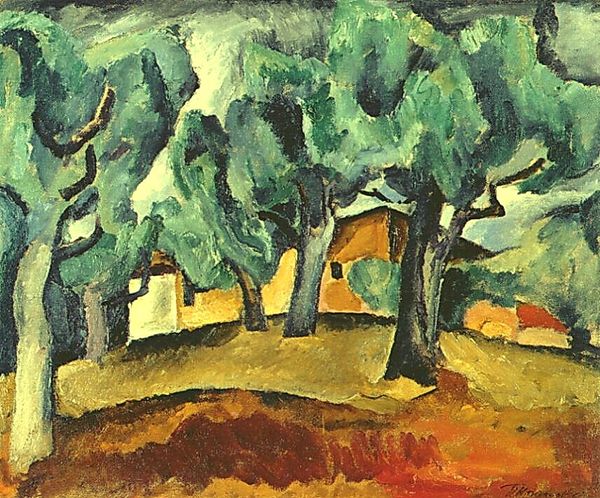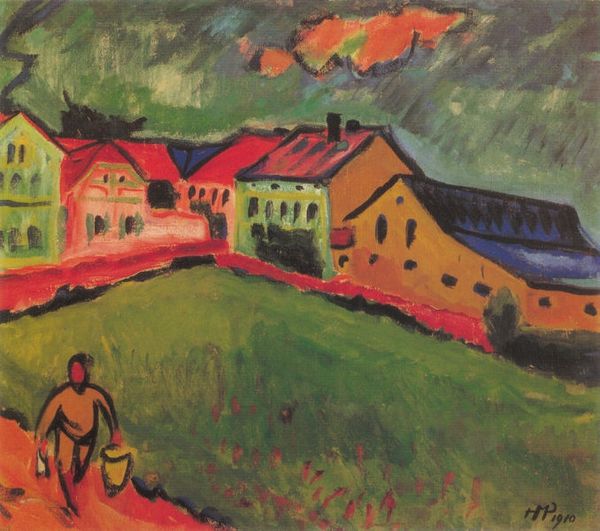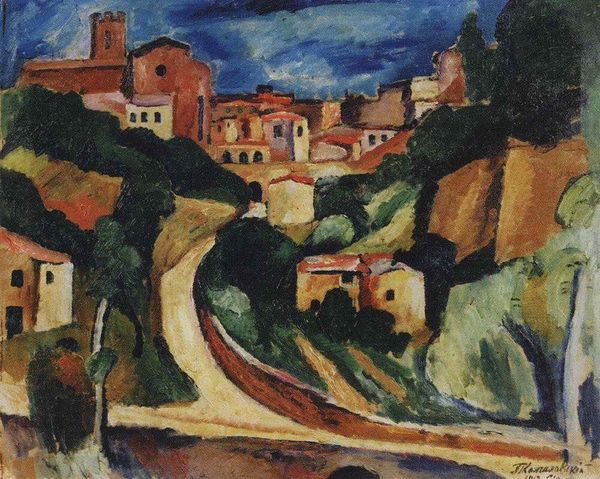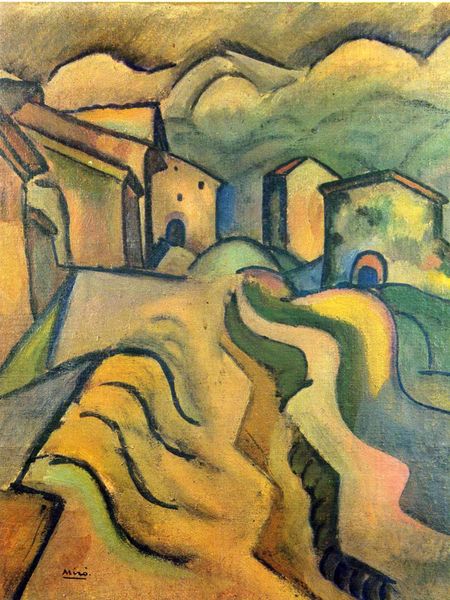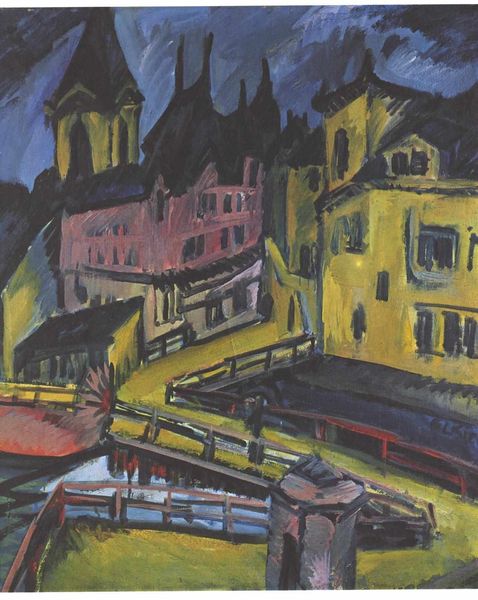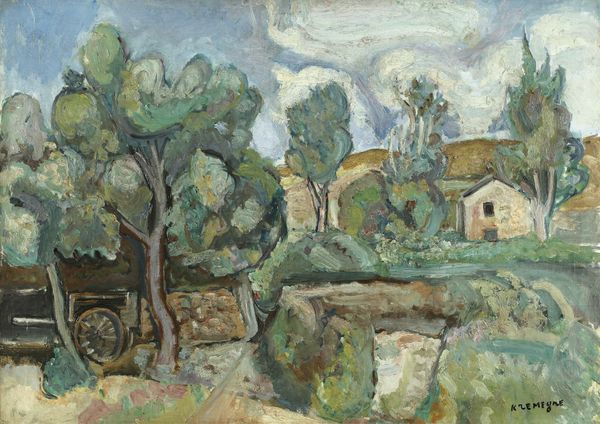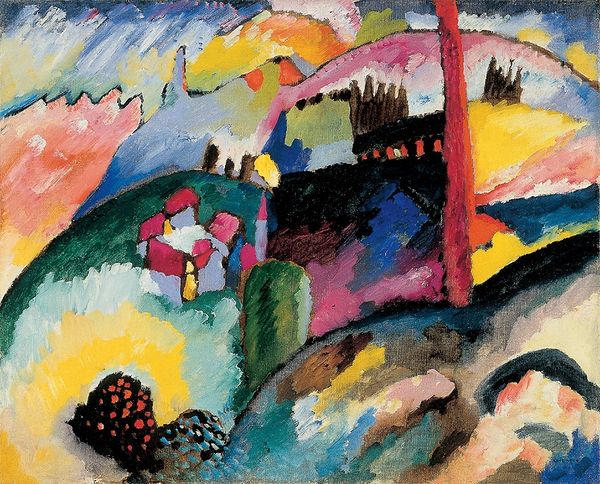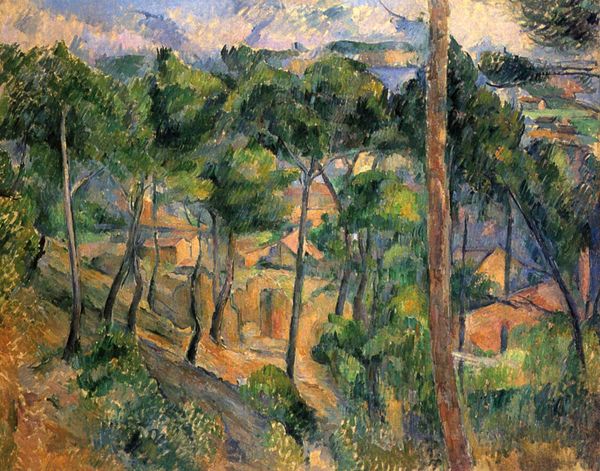
Dimensions: 54 x 65 cm
Copyright: Public domain US
Editor: Here we have Raoul Dufy's "Riders" from 1909, rendered in oil paint. It feels very dreamlike, the colors are muted, and the forms are loose. What jumps out at you, viewing this from a formalist perspective? Curator: Note how Dufy orchestrates space not through traditional perspective but through overlapping planes and colour density. See the yellow-orange building juxtaposed with cooler blues and greens of the foliage? The arrangement calls attention to itself, making the composition its subject. Are the riders themselves truly the focal point, or merely elements within the larger framework of the cityscape? Editor: So, the 'what' is less important than the 'how'? I suppose I was drawn to the figures first. Curator: Precisely. While the riders provide a representational element, it is their relationship to the architecture and the landscape that's critical. Observe the brushwork. How does Dufy apply the paint? Does it seem methodical, or spontaneous? Editor: There's a definite looseness, especially in the trees and sky. It’s not quite abstract, but… suggested, maybe? Curator: Exactly. Consider then how this aesthetic approach impacts your perception. Does the sketch-like quality diminish or enhance the emotional weight of the image? And what meaning do we derive from it? Editor: It gives it a feeling of fleeting time, an impression rather than a record. It's about the instant, not the lasting monument. That's insightful, thank you. Curator: And, ultimately, that is the power of formalism; not just to see *what* is there, but *how* its assembly creates meaning. A valuable perspective that enriches art appreciation.
Comments
No comments
Be the first to comment and join the conversation on the ultimate creative platform.
